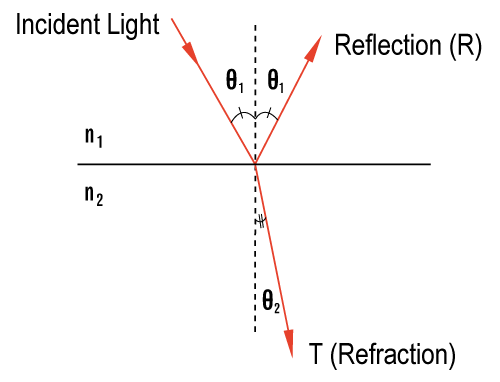

This may cause a distorted image of the object, as occurs with rippling water, or no image at all. Instead of forming an image, the reflected light is scattered in all directions. If a surface is rough, diffuse reflection happens. A ray diagram showing how an image forms in a plane mirror Diffuse reflection In a virtual image, the rays appear to diverge from behind the mirror, so the image appears to come from behind the mirror. This is the type of reflection that happens with a flat mirror. Reflection from a smooth, flat surface is called specular reflection. The diagrams show a water wave being reflected at a barrier, and a light ray being reflected at a plane mirror. The angles of incidence and reflection are measured between the light ray and the normal - an imaginary line at 90° to the surface. The reflection of sound causes echoes.įor example, if a light ray hits a surface at 32°, it will be reflected at 32°. All rights reserved.Waves - including sound and light - can be reflected at the boundary between two different materials. Copyright © 2023, Columbia University Press. The Columbia Electronic Encyclopedia, 6th ed. This phenomenon is known as total internal reflection. The refractive index determines how much the path of light is bent, or refracted, when entering a material.This is described by Snells law of refraction, n 1 sin 1 n 2 sin 2, where 1 and 2 are the angle of incidence and angle of refraction, respectively, of a ray crossing the interface between two media with refractive indices n 1 and n 2. For angles of incidence greater than the critical angle, refraction cannot take place and the incident ray is instead reflected back into the original medium according to the law of reflection (angle of reflection equals angle of incidence). This angle of incidence is known as the critical angle. The amount of transmitted light increases when the angle of incidence. Thus, there will be some acute angle less than 90° for the incident ray corresponding to an angle of refraction of 90°. How much light they reflect vs the amount they transmit depends on the angle of incidence. If the original medium is denser than the refracting medium ( n i greater than n r), sin r will be greater than sin i. Using indexes of refraction, Snell's law takes the form sin i/sin r= n r / n i, or n i sin i= n r sin r. Indexes of refraction are always equal to or greater than 1 for air, n=1.00029 for water, n=1.33. The index of refraction, n, of a transparent medium is a direct measure of its optical density and is equal to the ratio of the speed of light in a vacuum, c, to the speed of light in the medium: n= c/v. Snell's law is often stated in terms of the indexes of refraction of the two media rather than the speeds of light in the media. This law, credited to Willebrord Snell, states that the ratio of the sine of the angle of incidence, i, to the sine of the angle of refraction, r, is equal to the ratio of the speed of light in the original medium, v i, to the speed of light in the refracting medium, v r, or sin i/sin r= v i/ v r. Refraction is used to guide light in optical.

The angle of refraction, t, (t for transmitted) is described by Snell’s law (of Refraction): n i sin i n t sin t. The angle of reflection, r, equals the angle of incidence, i, where each is defined with respect to the surface normal.

The law of refraction relates the angle of incidence (angle between the incident ray and the normal) to the angle of refraction (angle between the refracted ray and the normal). and refraction (a specific type of transmission).


 0 kommentar(er)
0 kommentar(er)
